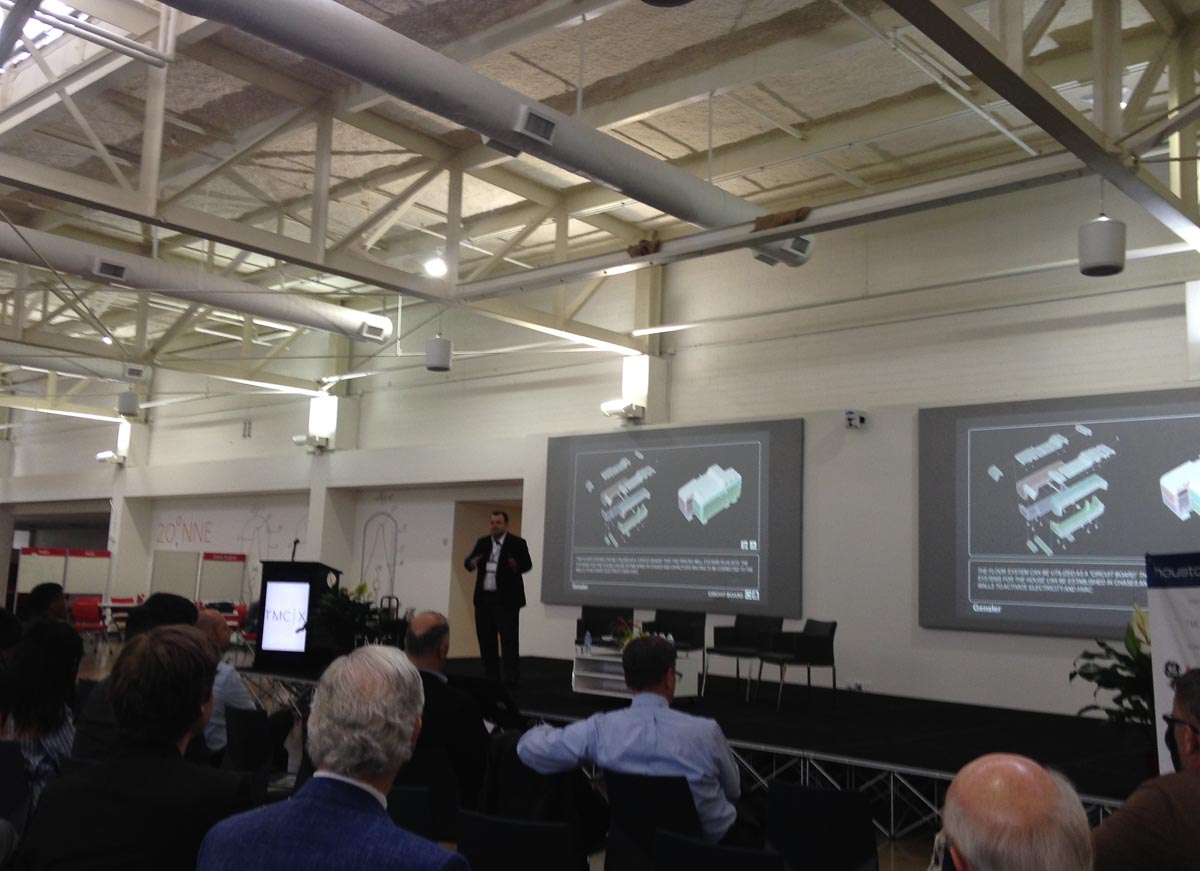The technology garnered international attention last year when the Chinese company WinSun announced it had used 3D-printing to construct 10 houses in a day.
At a conference in Houston Thursday, a Gensler official said his firm is working with WinSun to explore how that technology could be used in several different places, including – potentially – the U.S.
“When you start thinking about what that means, it’s mind boggling,” said Jorge Barrero, a senior associate at Gensler, speaking at the Houston 2035 conference Thursday. “This is going to be very, very disruptive to our industry.”
Gensler is collaborating with WinSun through WinSun Global, a partnership that includes other companies.
One idea under consideration: a new style of urban planning, where a 3D printing facility forms the center of a community.
Barrero described a theoretical neighborhood in which a massive 3D printer could be stored in a factory, and the houses it produces would be installed around it. Once the neighborhood was complete, the 3D printer could be removed, and the factory would be left behind and converted into a school, community center, or other amenity.
Barrero says Gensler’s experiments suggest a 3D-printed building would cost 30 to 40 percent less than a similar structure.
That’s partly because the automation behind the technology allows construction to happen with almost no waste, unlike typical construction.
The structures could also be built more quickly, which means it may be economically feasible to use the technology to build a new type of temporary or pop-up building.
“We want to challenge the industry to think differently,” Barrero says
Barrero says Gensler and its partners are evaluating how 3D printed homes would work in the U.S. as well as Haiti, Ghana, Saudi Arabia and Egypt.
Still, the technology has its limitations. Today, the 3D-printed houses in China are produced at a fabrication center. That means their pieces must fit in a shipping container or truck bed.
The homes are largely built with stacked layers of concrete – which doesn’t always have the sexiest appearance. But Barrero envisions a scenario in which the concrete becomes more versatile when combined with other materials. Toss some seeds into the mix, Barrero says, and you might have a “green” roof, for example.
“As a designer,” Barrero says, “my mind starts going all over the place.”

